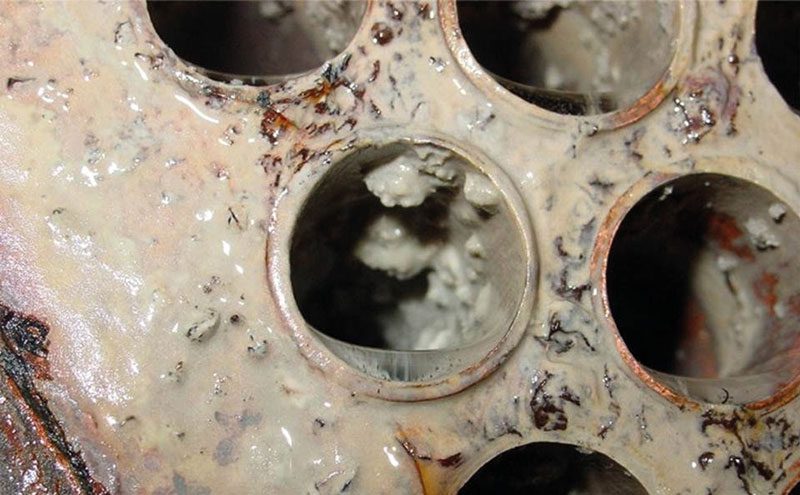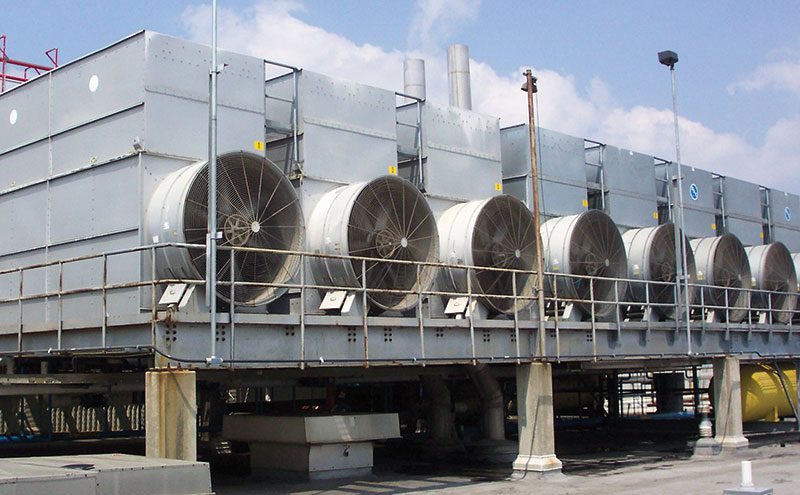Dr Simona Vasilescu of NCH Europe reviews some of the science behind biofilms and why they cause problems in water systems.

What are biofilms?
Many different types of planktonic (free-floating) bacteria can be found dispersed throughout a water system. These come together to form an aggregate, which adheres to the inside of the system’s pipes. These attached bacteria then produce a matrix of extracellular polymeric substance (EPS), often referred to as slime, covering them completely.
This matrix is a collection of DNA, proteins and polysaccharides that form a protective housing around bacteria, creating a safe space, and preventing biocide treatment from reaching the bacteria. In fact, bacteria in a biofilm are 10 to 1000 times more resistant to treatment than in their planktonic, free-floating form, as explained by Don Monroe in the journal PLOS Biology.
There are three stages to biofilm development: attachment, growth and dispersal.
Getting attached
A biofilm starts when a few pioneer bacteria use specialised chemical hooks to adhere to a surface. This can occur in response to many factors, ranging from attachment sites present on the pipe surface, nutritional cues or sub-inhibitory concentrations of stress factors such as biocides.
It is thought that the first colonists of a biofilm adhere to the surface initially through weak, Van der Waals forces and hydrophobic effects. Interestingly, the number of planktonic bacteria in the water does not correlate with either the formation or presence of a biofilm.
Growth: Slow, then rapid
Biofilms develop slowly at first, because only a few organisms can attach, survive, grow and multiply. However, after this initial colonisation, populations increase exponentially as bacteria continue to multiply, increasing the thickness of the biofilm rapidly.
Furthermore, other bacteria and non-living debris in the water adhere to the sticky biofilm matrix to join the colony and advance the biofilm. This means there are often many different bacterial species contributing to the complex slime matrix.

Dispersal
Dispersal of bacteria from the biofilm colony is an essential stage of the biofilm life cycle, enabling their spread to other parts of a water or wastewater system. This happens when bacteria within the biofilm spontaneously secrete enzymes, such as dispersin B and deoxyribonuclease to break out of the slime matrix, and back into the water.
This reverts some of the bacteria back to their free-floating planktonic state, free to start a new colony of biofilm elsewhere in the system. Researchers have tried to harness the signalling and chemical power used at this stage, as this could be the key to breaking down the biofilm matrix.
Resilient structure
Once a biofilm has advanced, it forms a complex structure in which different bacteria occupy different environments. This sophisticated approach means bacteria towards the outside of the community have a very different structure to those deep within the matrix. It is this diversity that adds to the stubbornness, as treatment will need to target many different physiologies.
A biocide may be effective against one bacterial strain, but the other strains may remain unaffected. Without breaking down this complete protective layer, the bacteria will remain protected and free to multiply. Furthermore, the bacteria contained within the matrix use quorum sensing, meaning they are constantly undergoing genetic divergence. This gives biofilms phenomenal recovery and re-growth abilities after a population hit, often caused by treatment attempts.
Health hazard
One of the places where biofilms cause problems is industrial cooling towers. They are associated with the spread of Legionella bacteria. The problems occur because of amoebae (single-celled organisms).
Amoebae join the biofilm colony and feed on the bacteria within it, including Legionella bacteria. The ingested Legionella then proliferate within the amoeba as it provides suitable conditions for them to multiply.
Many industries rely on water cooling systems, with processes that depend on heat being removed from a production area quickly. If the pipe of the water cooling system is coated in biofilm, then the heat exchange from the hot item to the cool water becomes much more difficult.
It’s could be compared to someone trying to cool down but refusing to remove their coat – it’s inefficient. A biofilm layer of just 0.1mm can reduce efficiency so much that the associated electricity costs to power your plant can increase by four times more than if the system contained the same thickness of calcium carbonate scale.
Biofilms are rarely detected, mainly because plant managers are not actively looking for them. They often aren’t considered as the cause of increased electrical costs. It also doesn’t help that biofilms are generally just a few microns thick, 100 times smaller than the cross section of a strand of hair.
Using the latest techniques, a water treatment specialist can inspect cooling systems and analyse samples to detect the presence of biofilms inside a water cooling system and advise on appropriate treatment.
Biofilms are also a leading cause of microbiological corrosion. They can contain sulphite-reducing or iron-depositing bacteria that destroy steel, creating problems with pipes. Compared with standard corrosion, it is 10 to 1000 times quicker to develop and is 10 to 100 times more aggressive.
Among the solutions available for cooling systems is NCH Europe’s BioeXile, a patented liquid-based treatment that breaks down the biofilm, exposing the bacteria within.
BioeXile has been designed to keep up with the diverse and resilient matrix of biofilms, which this product breaks down. The exposed bacteria can then be treated with biocide, to avoid recolonisation.







